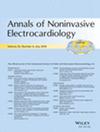Prevalence of Bundle Branch Block and Axis Deviation in Permanent Atrial Fibrillation and Gender Differences
Abstract
Objective
To investigate two conditions that have been poorly investigated in the medical literature before in the context of atrial fibrillation: the coexistence and association of right or left bundle branch block and axis deviation in patients with permanent atrial fibrillation compared to the control group of healthy subjects with sinus rhythm.
Material and Methods
We conducted an analytic, retrospective observational study performed at Ziv Medical Center, Safed, Israel, collecting data from medical history records of all patients that have been diagnosed with permanent atrial fibrillation versus healthy controlled patients with normal sinus rhythm. We analyzed their ECGs in order to assess the presence of any bundle branch block and/or axis deviation.
Results
Subjects with atrial fibrillation have significant correlation with left bundle branch block. Subjects with sinus rhythm have significant correlation to left axis deviation. Young subjects (below the age 73.5 y/o) with atrial fibrillation show significantly higher correlation with left bundle branch block and older subjects (above the age 73.5 y/o) with sinus rhythm show significantly higher correlation to left axis deviation.
Conclusion
There is a correlation between atrial fibrillation and left bundle branch block. The presence of left bundle branch block could be a risk factor for atrial fibrillation and the presence of left axis deviation could be a protective factor. There is no difference between female and male patients. There is a difference in the age group; young subjects with atrial fibrillation have a significant correlation with left bundle branch block, which may demonstrate a poor prognosis for patients with atrial fibrillation.


 求助内容:
求助内容: 应助结果提醒方式:
应助结果提醒方式:


